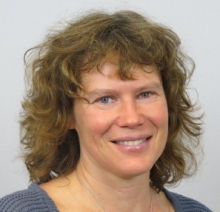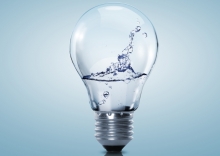Issue:
Water utilities are increasingly looking at opportunities to reduce energy use and cut carbon emissions, with those at the forefront setting their sights on becoming energy neutral or even net exporters of energy. Keith Hayward provides an update on one of Europe’s most significant current projects – upgrading of the main sewage treatment plant in Vienna.

The water sector has a reputation for being a conservative industry. If that is the case, it will be helped by the growing number of examples that can give utilities confidence the time is right to take a fresh look at their assets and aim for a radical shift in their energy use.
A utility with one of the longest track records on energy self-sufficiency is Germany’s Hamburg Wasser, which achieved energy self-sufficiency for its main wastewater treatment plant in 2011. Another that has been taking a strong lead on energy and greenhouse gases is VCS Denmark, which serves Odense, Denmark’s third largest city. It set and achieved a goal of becoming energy neutral by the end of 2014, and it too continues to make further advances.
Another utility that has set itself a similar aim is Ebswien hauptkläranlage. Wholly owned by the City of Vienna, the utility operates the Austrian capital’s main sewage treatment plant. This serves the whole of the city, handling some 680,000m3 a day dry weather flow and up to 1,550,000m3 a day in wet weather.
The plant is located in the southeast of the city in Simmering, on the south bank of the Danube. Expansion and upgrading of the treatment there had left the plant with an energy demand that highlights just why the new outlook has emerged: a 63 GWh/year energy requirement for the treatment of the city’s wastewater, representing around 1% of the entire city’s needs.
Ebswien has now set its sights on transforming this situation. Construction work is underway on a huge upgrading of the Simmering plant. The scheme is known as ‘E_OS - Energy_Optimisation Sludge Treatment’ and represents an investment of some Euro250 million. Due for completion by the end of 2020, it is set to transform the utility’s energy use.
Christian Gantner, CEO of Ebswien, comments: ‘As with many other cities, Vienna is under pressure to fulfil goals regarding carbon dioxide reduction. The E_OS project will reduce carbon dioxide emissions by 40,000 tonnes/year.’ Significantly, this is to be achieved while at the same time providing biological nutrient removal (BNR) at the plant. ‘The Vienna main sewage treatment plant also aims to be the most modern plant in Europe,’ continues Gantner. ‘Creating a BNR-plant which will produce more electrical end thermal energy is an important signal to the community of large wastewater treatment plants, and will contribute to Vienna’s reputation of being among the leading cities within Europe when it comes to environmental protection.’

plant in 2020 (c) LBS-ebswien
Building on earlier action on energy
Concern around energy is not new for Ebswein. In fact, in 2006 it started a project called ‘Electricity from Renewable Energy’ (SternE – Strom aus erneuerbarer Energie) in order to exploit renewable energy options at the plant alongside ongoing improvements in energy efficiency.
Activities under the SternE project have included installation of a Kaplan turbine in the outlet structure of the treatment plant in 2009. This produces up to 1.3 million kWh a year using the height difference between the outlet and the Danube Canal. In 2013 it also added a huge hydronamic screw upstream of the turbine. This 13.5m long, 26 tonne screw generates around half a million kilowatt hours of electricity a year using the 1.7m drop along the length of the channel to the outlet structure.
Other activities have included a photovoltaic solar power plant commissioned in 2010 to power the city’s electric vehicles, as well as a solar thermal installation. Also, a small wind turbine has been providing power for lighting some of the plant since 2011.
According to the city, the SternE project has reduced the emissions from the main treatment plant by around 2700 tons of carbon dioxide equivalents a year thanks to the replacement of 11% of the 2006 energy usage of 63 GWh/year with renewable energy sources.
The E_OS project will take this energy picture to a whole new level. The existing primary sedimentation and first biological treatment step are being replaced and a whole new sludge treatment system featuring six 30m high digesters is to be built to provide energy-efficient treatment of sludge and to generate power from biogas. A co-generation plant will utilise the 20 million cubic metres of methane produced a year to generate 78 GWh of electricity and 82 GWh of heat, meaning the plant will be able to generate all the energy it requires for wastewater treatment.
Contracts let and construction underway
All contract packages for the upgrading of the Simmering plant were awarded last year. According to Ebswien, all detailed design on the treatment processes to be used was completed before tendering took place.
The main contract packages are:
Earthworks / construction: Haider
Air supply for fine bubble diffuser aeration: Sulzer Pumps
Electromechanical equiment (wastewater): GIS Aqua Austria
Electromechanical equipment (sludge): VA Tech Wabag
Decanter centrifugues: Flottweg
Membrane gas holder and building services: Ing. Aigner Wasser – Wärme – Umwelt
Combined heat and power plants: Integral – Montage Anlagen- und Rohrtechnik
Power supply, automation and control: Siemens Austria
The construction of the sludge treatment is clearly a fundamental aspect of the energy shift, but according to Ebswien, the improvements to the primary and biological treatment stages represent an important contribution to the overall project. After more than 40 years of operation, the plant needed to be either reconstructed or refurbished. Assessments showed that reconstruction was the economically favourable solution, opening the possibility for the sludge project due, for example, because of the opportunity to create the physical space needed for this step.
In the reconstruction, the same volume for the primary sedimentation as before is being constructed. The volume of the first stage aeration tanks is being increased by 25%. According to Ebswien, the intermediate sedimentation tanks will have a much larger volume and a higher surface load. It says that the main performance gains will be will be lower energy consumption and lower odour and aerosol emissions, due to a new fine bubble diffuser aeration system that is replacing the existing surface aeration.
During 2016, Ebswien says that three quarters of the new primary sedimentation will be constructed, have electromechanical equipment installed, and be started up. The intermediate pumping station, half of the aeration tanks and a quarter of the intermediate sedimentation will be constructed, along with the blower station and accompanying medium- and low-voltage rooms. Installation of the electromechanical equipment in the pumping station, aeration tanks and intermediate sedimentation will then get underway, along with installation of the medium- and low-voltage systems.
This all represents a huge programme of work: it is described as the largest environmental project ever undertaken by the city. That not only represents a challenge in itself, but as would be expected for such a crucial plant, there is the additional task of keeping the plant operational through to the completion in 2020.
Keywords:
- Austria, water and energy, municipal wastewater, sewage






